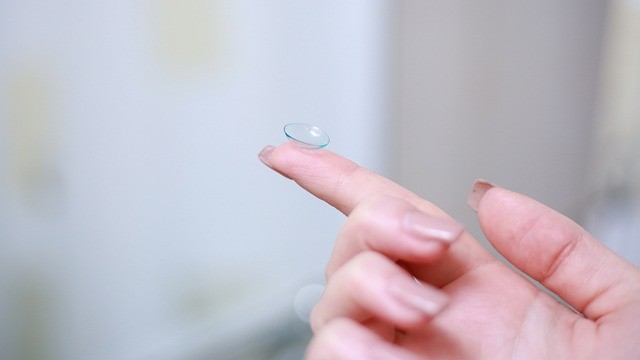Multifocal contact lenses correct vision for various distances, removing the need for separate glasses for near and distant vision. An article in Salon Prive magazine explains that these lenses are specially designed for the age-related condition called presbyopia, which affects near vision.
More so, lenses use optical technology to ensure clear vision at different distances, enabling those with presbyopia to see clearly at various focal points. Two main types of multifocal contact lenses are available: simultaneous vision lenses and segmented lenses.

What Are Multifocal Contact Lenses? Here's How This Device Helps People With Presbyopia to See Clearly
What Is Presbyopia?
According to the National Eye Institute, presbyopia is an age-related refractive error that affects the ability of middle-aged and older individuals to see nearby objects clearly. It occurs when the eye's lens loses its ability to focus light properly onto the retina, the light-sensitive tissue at the back of the eye.
It is a natural part of the aging process and typically develops after the age of 45. Also, it is common for many individuals to experience other refractive errors alongside presbyopia.
Symptoms may include trouble seeing nearby objects, the need to hold reading materials at a distance for better focus, eye strain resulting in tired or sore eyes, and occasional headaches. While presbyopia progressively worsens over time, it tends to reach a stable state after an individual reaches the age of 65.
The condition occurs when the eye's lens becomes less flexible, leading to difficulty focusing on nearby objects and causing blurred vision. It should not be confused with farsightedness, which is another refractive error that affects the ability to see things up close.
As presbyopia worsens, glasses or contact lenses become necessary for reading. Over-the-counter reading glasses or prescribed lenses can help improve clarity.
READ ALSO: How Have Contact Lenses Been Improved Over the Years
Multifocal Contact Lenses At Work
Multifocal contact lenses are suitable for various vision needs because they are designed with two or more prescriptions, as per NVision. While bifocal lenses are widely recognized, there are other options like trifocals and progressive lenses that fall under the category of multifocal contacts.
Wearing multifocal lenses provide the flexibility to switch between different activities seamlessly. For instance, users can use their phone's GPS while stationary and then easily read road signs while driving.
These lenses have distinct sections to cater to different prescription requirements, with bifocal lenses in glasses having a top section for correcting dominant refractive errors, such as myopia, and a bottom section to address presbyopia. Similarly, bifocal contact lenses often work in a similar manner.
Bifocal contacts are a specific type of multifocal lenses suitable for individuals who have recently developed presbyopia and have been wearing contact lenses to correct one refractive error, such as myopia or astigmatism. They are a good choice for those accustomed to wearing contacts but now require two powers for better visual clarity.
However, for those with multiple refractive errors, including myopia, astigmatism, and presbyopia, bifocal lenses may not provide enough correction. In such cases, progressive multifocal contacts or concentric multifocal contacts are more appropriate, allowing you to adjust the vision to different distances with ease using different lens powers.
RELATED ARTICLE: Optometrist Warns Against Wearing Unprescribed Contact Lenses For Halloween, Could Cause Eye Infections
Check out more news and information on Eyes in Science Times.




![Earth's Quasi-Moon Kamo‘oalewa Could Originate From Lunar Surface Not Asteroid Belt [Study]](https://1721181113.rsc.cdn77.org/data/thumbs/full/53275/89/56/50/40/earths-quasi-moon-kamo-oalewa-could-originate-from-lunar-surface-not-asteroid-belt-study.png)









